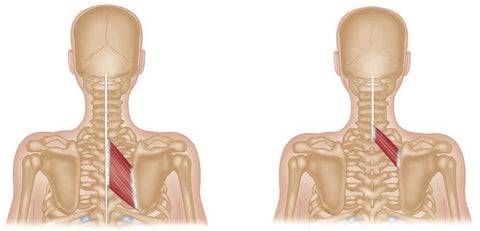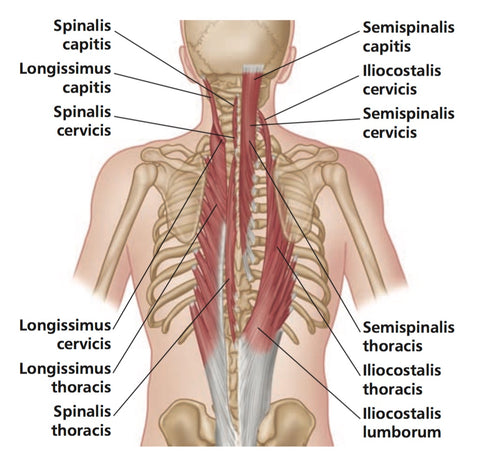Myofascial Release Techniques for the Rhomboids / Thoracic Spine using Soft Tissue Release (STR)
Sports Osteopath John Gibbons demonstrates myofascial release techniques for the Rhomboids and Erector Spinae
Rhomboids and Trigger Points
A hypertonic rhomboid will have a marked effect on the positioning of the scapula by lifting and retracting it. This will consequently inhibit the neural status of the serratus anterior, in turn affecting the external oblique, and so on along the chain.
Force couple actions will be out of sequence, setting up the ideal environment for strain and overuse injury. When the serratus anterior is hypertonic, the rhomboids become inhibited and the scapula will sit wide and drop.

Rhomboid Major (Left), Rhomboid Minor (Right)
Erector Spinae and Trigger Points
This group includes the iliocostalis, longissimus, spinalis, and multifidi. Eccentrically, these muscles decelerate forward flexion, lateral flexion, and rotation. These muscles are the main stabilizers of the lumbar spine in normal gait.
These muscles can refer pain from the lumbar erectors into the gluteal and sacral areas. As a loose rule, pain generally refers up and out, with myofascial trigger points in the suboccipitals, causing severe headaches.
Mid-thoracic myofascial trigger points can refer pain into the anterior chest wall and abdomen. Pain experienced as rib pain can often be related to myofascial trigger points.
Myofascial trigger points in the cervical spine are often caused by repeated supine sit-ups or crunches performed on the floor, without first stabilizing the hyoid by means of correct tongue position.
These in turn can perpetuate myofascial trigger points in the psoas, scalenes, and sternocleidomastoid, and down the chain into the plantars.

Muscle of the Thoracic Spine
Find a Trigger Point Professional in your area
Courses for Exercise Professionals
This trigger point therapy blog is intended to be used for information purposes only and is not intended to be used for medical diagnosis or treatment or to substitute for a medical diagnosis and/or treatment rendered or prescribed by a physician or competent healthcare professional. This information is designed as educational material, but should not be taken as a recommendation for treatment of any particular person or patient. Always consult your physician if you think you need treatment or if you feel unwell.

Continuing Professional Education
Looking for Massage Therapy CEUs, PT and ATC continuing education, chiropractic CE, or advanced manual therapy training? Explore our evidence-based online courses designed for hands-on professionals.



















